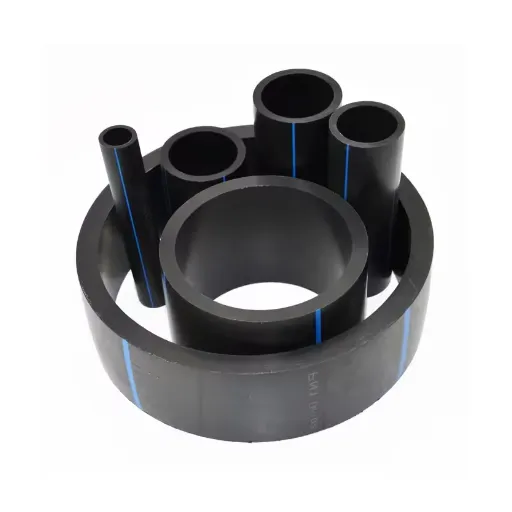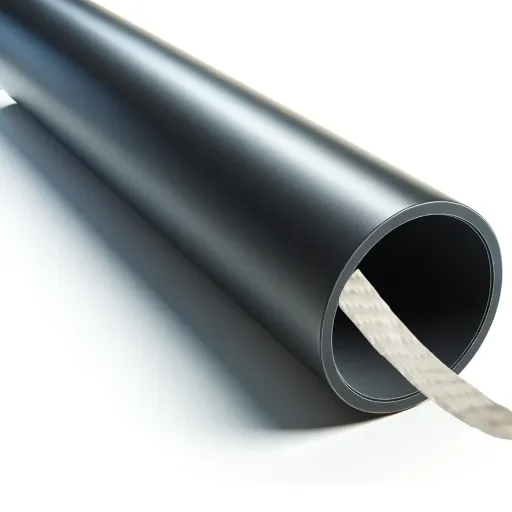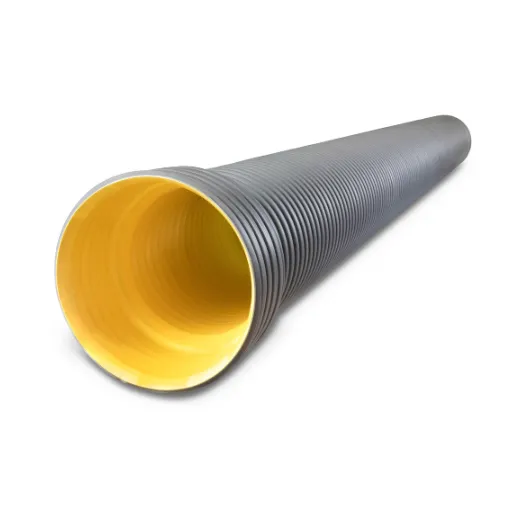Cutting high-density polyethylene (HDPE) pipe requires precision, the right tools, and a clear understanding of the material’s unique properties. Whether you’re working on a large-scale infrastructure project or tackling a small DIY task, achieving clean and accurate cuts is essential to maintaining the integrity and performance of the pipe. This guide is designed to provide step-by-step instructions, practical tips, and an overview of the most effective tools for the job. By understanding the proper techniques and considerations, you can avoid common mistakes and ensure efficient, safe cuts that meet professional standards.
What is HDPE, and Why Choose it for Pipe Projects?
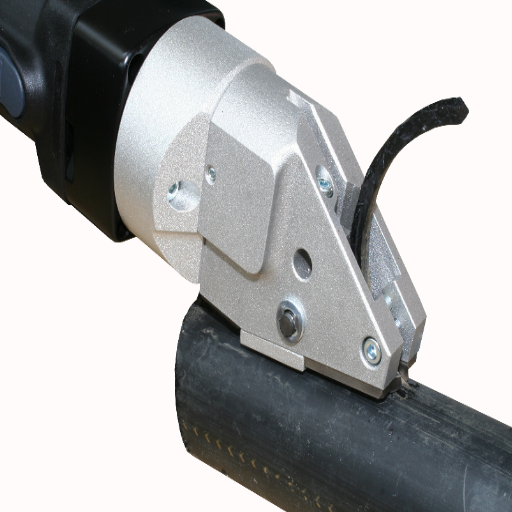
Understanding High-Density Polyethylene
High-density polyethylene (HDPE) is a versatile thermoplastic polymer with remarkable strength, flexibility, and resistance to chemicals. An additional feature is that HDPE has a high strength-to-density ratio (0.93 to 0.97 g/cm³), which makes it lightweight while maintaining excellent structural integrity.
Moreover, one of the key advantages of HDPE is its outstanding impact and abrasion resistance, and resistance to corrosion and environmental stress cracking. This enables its use in piping projects located in challenging settings, such as underground installations, chemically intensive environments, and locations with high UV exposure. In addition to that, HDPE piping has an impressive lifespan that exceeds fifty years under optimal conditions, which lowers frequent replacement and associated costs.
When constructing pipelines, HDPE’s seamless joints created by fusion welding make it easier to install which enables less scope for leaks and better long-term reliability and operational efficiency. This flexibility allows for lesser operational constraints over rough topography including curves without compromising function. All of these attributes enable HDPE to be one of the most sought-after materials in modern infrastructure and industry.
Benefits of Using HDPE Pipe
- Highly Resistant Durability: The mechanical features of HDPE pipes which includes high impact resistance and the ability asto withstand extreme collision as well as environmental conditions are of great importance. In addition, HDPE pipes are corrosion and chemically inert, and thus, have a longer service life even in severe industrial or underground applications.
- Economy Efficient: The long-lasting economic benefits offered by HDPE pipes give them advantages over other piping materials despite having almost the same initial cost. The severe reduction in maintenance requirements coupled with the resistance to wear and extended lifespan result in significantly lower overall lifecycle costs. In addition, the lighter weight of HDPE pipes significantly reduces the cost of fuel, making them further economical.
- Environment-Friendly: HDPE pipes are an environmentally friendly option for infrastructural expansion because plastics are recyclable. Its manufacturing process also emits lower carbon in comparison to similar materials, making it more eco-friendly for construction and industry sectors while also contributing to increasing the global initiative to toxic-free HDPE is fully recyclable global efforts in protecting the environment by reducing its impact during’
- No Leak Installation: HDPE pipes are joined using the fusion welding arms that result in seamless and homogenous systems devoid of leaks. Furthermore, long-term application peacewise is more operationally efficient and reliable, especially in water supply systems and gas pipelines.
- Flexibility and Versatility: Owing to their remarkable flexibility, HDPE pipes can bend to accommodate sophisticated topographies and can transcend most installation hurdles. Their capacity to absorb shocks and vibrations without fractures makes them ideal for use in seismic areas or regions with active soil movements.
- High Flow Capacity: Due to the ultra-smooth internal surface of HDPE pipes, friction is kept to a minimum, which lowers head loss. This enables flow rates to be higher than those achieved with older materials. Efforts to meet the stringently low head loss requirement for reliable and consistent flow in systems such as water distribution and irrigation networks are critically dependent on this property.
These capabilities have made HDPE pipes an indispensable component of pipelines used in managing water resources, gas distribution, and environmental protection projects. Advances are still being made on these aspects of technical superiority to meet growing needs for toughness, efficiency, and sustainability in infrastructure development.
Comparing HDPE with PVC and Other Plastic Pipes
An analysis of HDPE (High-Density Polyethylene) pipes alongside PVC (Polyvinyl Chloride) and other plastic pipes shows marked differences in flexibility, durability, and environmental impact. The flexibility of HDPE pipes surpasses that of other types, enabling easier installation in difficult landscapes without needing numerous joints. Such flexibility also greatly diminishes the chances of a pipe fracturing due to thermal or mechanical stress. On the other hand, the rigidity of PVC pipes makes them less than ideal for areas susceptible to ground movement or vibrations.
Another comparison area is endurance. HDPE pipes are ideally suited for harsh uses like mining, industrial processes, and high-pressure water systems due to their great endurance to wear and tear, chemical destruction, and physical damage. Meanwhile, PVC pipes, although durable, display high resistance to impact but tend to weaken over time when subjected to harsh cold temperatures or prolonged UV radiation.
From an environmental perspective, HDPE pipes are considered to have a lower carbon footprint relative to rivals because of lower emissions during production and recyclability. Also, the service life of HDPE pipes is comparatively better–often more than 50 years- which reduces their need for frequent replacements. On the other hand, while PVC pipes can also be recycled, the manufacturing process of these pipes usually uses chlorine and other harmful substances, which are worrying from an environmental and health standpoint.
Studies have suggested that pipes made out of HDPE can reduce water leakage rates by up to 30% in comparison to older systems of rigid pipes, and this is attributed to the seamless joining techniques such as butt-fusion welding. In addition, HDPE pipelines can withstand pressures of 16 bars and beyond, while standard PVC pipes function at lower pressure ranges.
To sum up, while both types of pipes have their respective cases of applicable usage, HDPE pipes have shown considerable advantages over PVC pipes in terms of adaptability, endurance, and eco-friendliness, which has made them widely used in modern infrastructural projects.
How to Prepare for Cutting HDPE Pipe?
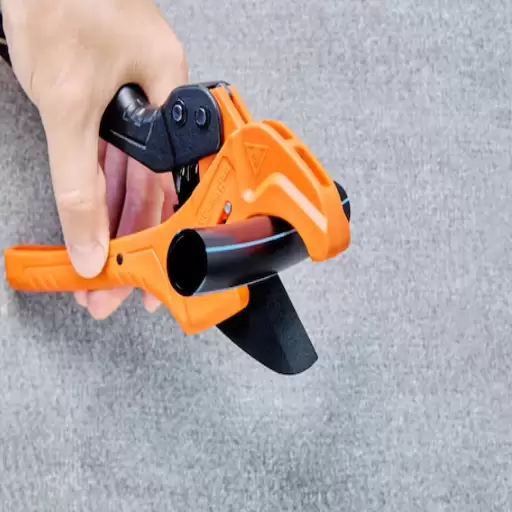
Essential Tools for Cutting HDPE Pipe
Maintaining a proper fit while preserving the integrity of the material and finishing the cut promptly is critical when working with HDPE (High-Density Polyethylene) pipes. Below is a list of the mentioned tools in more detail:
- Pipe cutters: Smaller diameter HDPE pipes can be handled with a specialized ratchet or guillotine style pipe cutter. These tools provide smooth cuts and avoid jagged edges that might create issues with the connection.
- Reciprocating Saw: A reciprocating saw with a sharp, fine-toothed blade is ideal for larger diameter HDPE pipes. This tool is suitable for straight cuts and is popular for on-site work because it can easily be transported.
- Circular Saws with Carbide Blades: Medium to large diameter HDPE pipes are best served with Circular saws with carbide tipped blades. They can be used for processes that require a lot of cuts because of how quickly and accurately they make cuts.
- Band Saws: These types of saws are best for precision cutting in industrial settings and workshop environments. They are particularly advatageuos when dealing with multilayered or thick HDPE pipes.
- Deburring Tool: After performing the initial cut, a deburring tool should be used to bevel the edges of the pipe to remove any sharp edges, burrs, or other pipe surface irregularities. This will improve the quality of welds or joints and increase safety in the pipe’s handling.
- Measurement Tools: Precise cuts are the result of precision measures, therefore alphabetic or numerical tapes, marking pens, and pipe calipers measuring instruments are essential for setting an exact angle or length.
- Clamps and Vices: During the cutting procedure, the workpiece pipe must be secured correctly and aligned to the HDPE fitting so that accurate angles are achieved. The special clamps and vices for the HDPE material hold the pipe securely in one position and reduce movement during the action.
For each of the steps outlined above, some tools are specifically designed to be used for preparing to cut HDPE pipes. Proper selection of tools improves work rate, performance, and hardware life of the pipeline system.
Safety Precautions During Pipe Cutting
The safety of workers and the materials involved is paramount when cutting HDPE pipes. Here are some recommended procedures to maintain safety:
- Personal Protective Equipment (PPE): Every worker participating in a cutting operation must not only wear compliant safety glasses but also gloves, ear protection, and steel-toed footwear. These materials help prevent injuries such as fragments hitting contracting and lifting machinery, sharp edges, and breaches of sound-level controls from industrial equipment.
- Workplace Setup: Set aside clean, solid, non-slipping, and anti-static surfaces as a workspace for cutting. Clear extra objects and enable proper ergonomics to reduce the chances of tripping. Accidents from unintentional movements performed within the range of sight require appropriate lighting.
- Maintenance and Inspection of Tools: Confirm the functionality of cutting tools, such as saws, cutters, or powered equipment, before use. Blades may be out of optimal condition, or tools might not function properly; these scenarios present a heightened risk of unintended injuries and improper cuts being made on the pipe.
- Proper Pipe Positioning: To avoid looseness in the pipes that causes shifting and vibration that can lead to cuts being made in circumspect areas, utilize vices or clamps designed explicitly for HDPE.
- Monitor Equipment Operation: Operators have to comply with all directions provided by the equipment’s manufacturer. Modify settings according to the specification of the pipe, for example, thickness or diameter, so that no tools are overexerted or wasted efforts are made to damage equipment.
- Environmental Considerations: Any cutting done outdoors or in a confined space should maintain constant attention to surrounding elements. Wet or damp surfaces, for example, may impair stability and confined spaces may need ventilation to eliminate harmful vapors or dust.
- Training and Supervision: All staff included in the pipe-cutting operations need to be trained properly so as to know the right steps to take as well as the procedures for emergencies. Supervisors are expected to manage the operations in such a way that safety measures are always observed.
By following these precautions all pipe cutting risks will be reduced, occupational safety and health standards will be met, and there will be smooth completion of the work without the quality of the pipeline system being jeopardized.
Marking and Measuring: Ensuring Accurate Cuts
All effective plastic pipe cuts will be accurate and precise due to accurate measuring and marking. These joints need to be clean in order for the pipeline system to function properly. The first step in achieving this goal is marking the cut lines using scribing tools or markers with industrial ink. The outlined marking chalk must be clear, bold and durable so it does not fade or smear during normal usage or any industrial processes.
The proposed methods, like tape measures and laser distance meters, also need calibrations on a routine basis alongside the standards of the industry. It must be understood that certain structural features, such as pipe wall thickness, diameter, and material type, need to be factored in when handling the measurement as they will influence the cutting specifications. Templates or adjustable angle finders can be used to accurately measure more complicated angles and non-linear cuts. Lastly, verifying measurements before executing cuts will drastically reduce error and material waste.
The accuracy and efficiency of marking and measuring procedures is improved with the integration of CAD software and digital profiling systems. These technologies assist in the visualization of piping layouts and help in simulating cuts before implementation. By following precise marking and detailed measuring techniques, professionals ensure that all engineering works are performed accurately in compliance with design specifications, that the integrity of the structure is preserved, and that deadlines are met.
What are the Best Tools for Cutting HDPE Pipe?
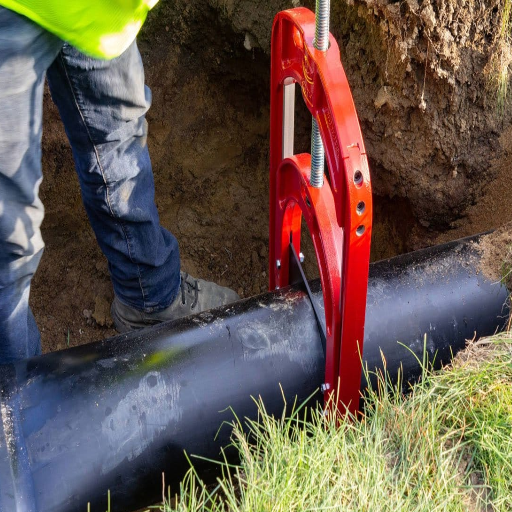
Using a Table Saw for Cutting HDPE Pipe
Table saws are particularly effective in cutting HDPE (High-Density Polyethylene) pipes when precision along with consistency is essential because of the efficiency they offer. Such a technique is best suited for pipes of all sizes as it achieves clean and straight cuts. To enhance the effectiveness of the cutting process, a blade made specifically for plastic and other non-ferrous materials has to be used since those blades are less likely to cause chipping or melting at the edges of the pipe.
Moreover, for an added level of precision, the HDPE pipe may be placed into position using a fixture or jig that makes the pipe stationary, thus avoiding movements that cause inaccuracy. Furthermore, providing that the pipe is not moved during the cutting process, setting the correct feed rate, along with allowing the blade to cut without forcing it, achieves smooth edges. Other than that, efficient systems have to be put in place to deal with dust or debris, as the HDPE is bound to produce them when cut using a table saw.
It should be remembered that HDPE’s low melting point about metals necessitates monitoring blade and pipe temperatures during operation. Excessive heat can deform or create burrs on the cut surface, which can be detrimental to the end product. Regular checks and maintenance of the saw blade improve cutting efficiency and prolong the tool’s life. These sculpting procedures allow a table saw to be used to achieve exceptional cutting precision and professional-level finishing with HDPE pipes.
How to Use a Band Saw on HDPE Pipe
Like any material, cutting HDPE pipes using a band saw requires a specific approach to be performed cleanly and accurately. As with any process, it begins with a series of steps that, when completed, guarantee the safety of the operator, avoid any damages to the material, and allow optimal structuring of the task at hand. Now, consider the first step of the process, which is the firm securing of the HDPE pipe into a stationary vice or set of clamps, which ensures that the pipe will not move during the cutting process. This prevents not only inaccuracy but also the greater danger of slipping and generating cuts where they were not intended to be placed.
Blades designed for the cutting of plastic materials can be used, and so too can HDPE diameter band saw blades. Each of these comes with their additional benefits and is equipped with fine, uniform teeth that enable the easy slicing of dense materials like HDPE. The primary advantage of these blades lies with their TPI, which dictates how efficient each blade is when placed against others. Specifically, the efficiency of each blade dictates how accurately they remove material from the bulk.
Set the band saw to a slower speed for cutting plastics. Set the speed is set too high, the heat generated could damage the HDPE material. It is important to keep a constant feed rate, as erratic movements can create jagged edges or burrs on the cut surface. Operators must be attired with appropriate protective equipment, including safety glasses and gloves, to shield themselves from sharp fragments and to ensure proper handling throughout the procedure.
Regular inspection and periodic maintenance of the band saw are essential for optimal performance. Check that the band-saw blade has proper tension and inspect the blade for nicks or damage before using it. To avoid issues, account for environmental conditions like temperature; if too cold or too hot, the material’s properties will change, altering the cutting needed. Following these recommendations ensures that the band saw used on HDPE pipes will have precise cuts while lowering material wastage and enhancing efficiency in industrial or workshop settings.
When to Opt for a Hand Saw or Pipe Cutter
Using a hand saw or a pipe cutter may yield great results when dealing with smaller-scale projects that demand high flexibility and portability. In comparison to other devices, hand saws are perfect for dealing with thinner and smaller HDPE pipes since they provide a cutting method that minimizes damage to the material. Saws do not require any external power sources, amplifying their value for remote sites, thus making them versatile and inexpensive.
Regarding uniformity and sharp, clean edges free of burrs, pipe cutters excel at meeting the job’s standards. Built only for pipes, they are designed to withstand constant use while remaining easy to navigate and reason. Manual ratcheting pipe cutters are an example fit for professionals as they offer precision and time-saving efficiency while limiting operator error. It should be noted that pipe cutters are most effective for cutters under two inches in diameter; larger tasks necessitate more robust tools.
Evaluating the project scope along with the material dimensions allows workers to choose the right tool to maximize efficiency alongside hand saws to maintain accuracy while minimizing labor intensity and potential waste.
Step-by-Step Guide to Cut HDPE Pipe
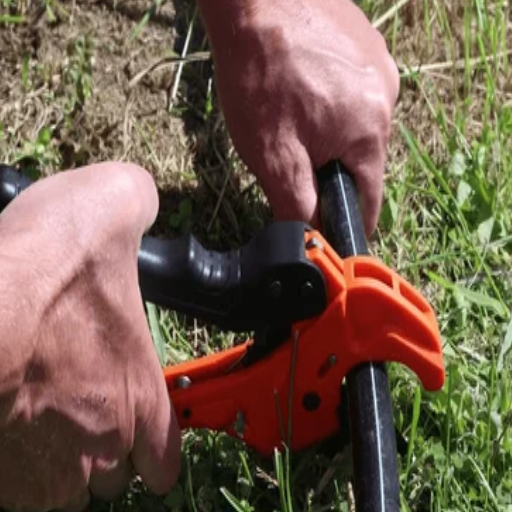
Setting Up the Pipe for Cutting
Steps should be followed as lack of care in preparation of the HDPE may result in rough cuts and cutting damages. First, wrap the HDPE pipe in the pipe vise or similar clamping device. This step is crucial because it prevents movement of the pipe which enables accurate cuts. Make sure that the clamp does not apply excess pressure which may cause the pipe to deform.
Inspect the pipe for any visible grease, dirt, or moisture that may obstruct the cutting process. Wipe clean the surface of the pipe using a dry cloth. Moreover, check the temperature of the pipe. The temperature of the pipe should not be drastically different from the environment. Significant temperature differences may cause expansion and contraction, which decreases cutting precision.
A cutting line should be drawn using measusuring tape to ensure precision, together with a non-permanent market so that it can be easily erased later on. A square and a pipe cutting guide can be used to ensure perpendicularity of the piping. This part is essential: uneven cuts may lead to a misalignment of pipe fittings and joints.
Executing the Cut: Techniques for a Clean Cut
Using the right tools and proper techniques for the specific pipe material is crucial for a clean and exact cut. For metallic pipes which include steel or copper, a pipe cutter with a rotary cutting wheel works wonders. One must first align the cutter’s blade to the mark and tighten the cutter as it is spun around the pipe. This method not only minimizes the risk of scrapes and the need for additional polishing but also ensures that no deformities occur to the edge contour of the workpiece.
In the case of plastic pipes like PVC or CPVC, fine-toothed saws or ratcheting pipe cutters do a superb job. For a ratcheting pipe cutter, it is important to bear in mind that the blades have to be set directly on the marked line before any application of force. When using saws, maintaining a steady pace without powerful jerking movements to reduce chances of rough and jagged edges aids in achieving clean cuts. Once cutting has been completed, tools to remove splinters and snags ought to be employed to assist in achieving smooth ends free from hindrances to fitting connections.
When dealing with problematic materials or large-diameter pipes, power tools like reciprocating saws and angle grinders can be employed. For protection against injuries, safety measures, including goggles and gloves, must always be put on before starting these operations. Strips of pipes must be cut accurately since the precision affects the integrity of the structure as well as the avoidance of leaks in the fittings to be used. The careful and correct performance of these steps is fundamental for enduring and dependable installations.
Finishing Touches: Smoothing and Deburring
Deburring and smoothing are important steps to take to prolong the performance of any piping system. Due to pipe cutting procedures, there are sharp edges—burrs—of fragments that can pose structural integrity issues and cause internal fluid turbulence. Various manual or mechanical deburring tools can polish these edges, enhancing their fitting and structural strength.
A great tool for hand-operated projects, such as pipes with minimal burrs, is the deburring blade. Larger or industrial-sized pipes are better suited for powered deburring machines that utilize rotating brushes or abrasive materials. Depending on the material that the pipe is made of will inevitably change the required deburring technique. Stainless steel pipes are best suited for abrasive heads, whereas PVC pipes can make use of standard tools.
Surfaces must be inspected to check for smoothness post-deburring and inspected for residual particles, as leftover detritus may cause obstructions within the system. Finally, check that the new edges processed are chamfered, especially in high-pressure systems, to enable easy joining and reduce wear on connecting parts over time. This step is of utmost importance for precision installations that adhere to safety measures and operational efficiency.
What Common Mistakes to Avoid When Cutting HDPE Pipe?
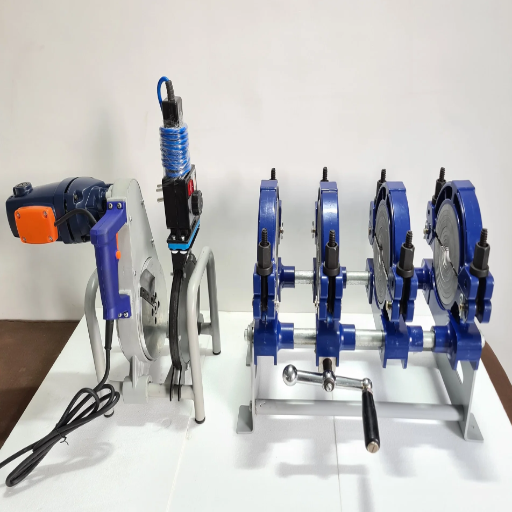
Avoiding Damage to the Pipe
One of the last results when cutting HDPE pipe is that using tools not meant for plastic piping can be a critical error. Dull blades or standard metal saws will cause the cuts to be jagged and uneven, significantly compromising the integrity of the pipe’s sealing capability. Another common mistake is using too much force during the cut, which can lead to micro-cracks and stress fractures. These pose a severe risk to the structure of the pipe over time, especially if the pipe is under high pressure.
It is also very important to ensure that the cutting aids are ergonomically supportive of the hands. Unsupported aids for arms and shoulders can cause unwanted bends and deformations, particularly for larger diameter pipes. Temperature plays a role too. If you are working with HDPE at extremely cold temperatures, the material tends to become brittle, making you prone to cracks during cutting or manipulating the material.
Last but not least, preventing the cleanliness of the workspace alongside the cutting tools can be detrimental to the piping system. Keeping debris away enables precise cuts, which additionally minimizes the risk of damaging system components, thus ensuring system reliability in the long run.
Choosing the Right Blade for the Job
Selecting an appropriate blade designed for cutting HDPE is essential in accomplishing precise, clean cuts while preventing substantial material damage. Blades made from high-speed steel (HSS) and those with tips made from durable materials are often specified because of their sharpness retention even after prolonged use. Moreover, smoother edges and the avoidance of chipping or excessive friction during edge finishing is achiev ed through high tooth count circular saw blades, specifically those ranging between 60 to 80 teeth.
The edge geometry, especially the configuration of the teeth, contributes significantly to the effectiveness of the cut. The Alternating Top Bevel (ATB) configurations do well in achieving clean cuts without substantial tearing to the fragile polymer-like HDPE. Also, to reduce the possibility of material splintering due to aggressive cutting forces, it becomes necessary to achieve a low or negative blade angle. Another important safety consideration is the blade diameter, which must be appropriately sized in tandem with the cutting tool to stabilize the system.
Equally important in proper maintenance is the upkeep of blades since worn out or broken blades can cause cuts to be uneven, deform materials, and create safety risks. Implementing routine maintenance and extending the life of your equipment will achieve the required performance by removing material buildups through blades cleansing and cleaning. Following these steps will not only improve the effectiveness and exactitude of your HDPE tasks but also result in better reliability and heightened productivity.
Managing Heat and Friction During Cutting
When carving out high-density polyethylene (HDPE), careful manipulation of heat and friction is pivotal to guarantee a precise, clean cut, whilst avoiding the warping of the material as well as damage to tools. The workpiece will be structurally impaired when the edges are melted due to HDPE being excessively heated during cutting. Sharp, carbide-tipped cutting tools must be employed to address these problems since they are intended to provide better results by decreasing heat retention and cutting HDPE, inflicting rough edges.
Effective cooling with air or liquid directly contributes to the maintenance of optimal cutting temperatures. Heat retention can be decreased through employing a consistent material contact with the tool and a steady feed rate. Research suggests that smoother cut quality is enhanced while thermally deformed HDPE is reduced due to the cutting speed of 3000 to 5000 surface feet per minute (SFM). Equally important is the provision of breaks during extended periods of cutting, as this facilitates better heat dissipation in both the cutting tools and the material, maintaining the economic life of the cutting tools and the quality of the material.
Using high-performance tools together with fitted feed rates and effective cooling allows experts to optimize cutting processes for HDPE and other high-grade materials, achieving accuracy and uniformity simultaneously.
Reference Sources
Frequently Asked Questions (FAQs)
Q: What tools do I need to cut HDPE pipe?
A: To cut HDPE pipe, you’ll need a pipe saw, cutting blades designed for plastics, or a circular saw with a fine-toothed blade. You might also consider using a router for more precise cuts, especially when dealing with HDPE pipe and fittings.
Q: Can I use a pipe saw to cut HDPE pipe?
A: Yes, a pipe saw is an effective tool for cutting HDPE pipe. It is especially useful for making straight cuts with the saw and can handle the common plastic material of HDPE efficiently.
Q: How do I ensure a straight cut when using a saw to cut HDPE pipe?
A: To ensure a straight cut, secure the pipe firmly and align the blade with the marked cutting point. Cut slowly and steadily, rotating the cutter around the pipe if necessary to maintain alignment.
Q: Is it possible to cut HDPE pipe with a circular saw?
A: Yes, cutting HDPE with a circular saw is possible. Use a circular saw with a fine-toothed blade to minimize plastic chips and achieve a clean cut. Ensure the blade is properly aligned with the pipe before cutting.
Q: What precautions should I take when cutting HDPE and PVC pipes?
A: When cutting HDPE and PVC pipes, wear safety goggles to protect against flying plastic chips. Use a saw with a fine-toothed blade to reduce debris and ensure the pipe is secured to prevent movement during the cut.
Q: Can I use a wood blade to cut HDPE pipe?
A: While a wood blade can cut HDPE pipe, it is not recommended as it may create rough edges and excessive plastic chips. A metal cutting blade or a blade designed for plastics will provide a cleaner cut.
Q: How do I avoid melting the plastic while cutting HDPE pipe?
A: To avoid melting the plastic, use a saw with a fine-toothed blade and cut slowly to reduce friction. Avoid using high-speed tools that generate excessive heat, and keep the blade moving steadily through the pipe.
Q: What is the best way to handle thicker HDPE pipe, such as 1-inch HDPE?
A: For thicker pipes like 1-inch HDPE, a pipe saw or a circular saw with a fine-toothed blade will do fine. It’s essential to cut slowly and steadily to ensure a smooth cut without damaging the pipe.
Q: What should I do if I’ve cut the pipe unevenly?
A: If you’ve cut the pipe unevenly, you can use a router or a fine file to smooth out the edges. Re-cutting the pipe with a properly aligned blade may also help achieve a more even finish.




